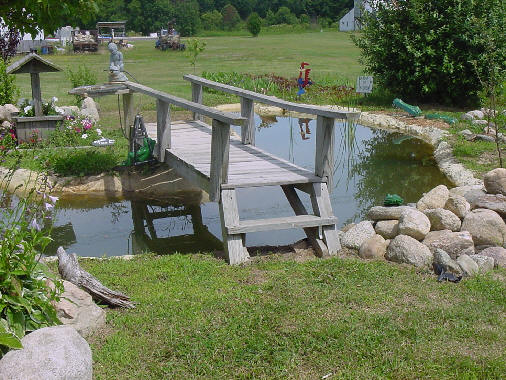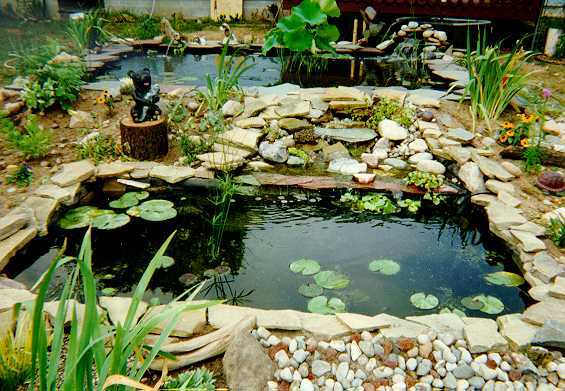You can create a wetland in any level area and make it suitable for most wetland plants by digging out a depression, lining it with plastic, refilling it with soil, and adding water. After selecting the site, you should:1. Using a hose or rope, lay out the shape of your wetland. An irregular shape will appear the most natural. Sometimes a long narrow curving wetland will fit nicely into a landscape plan. 2. Excavate an area 1-1/2 to 2 feet deep. The sides should slope gently to the deepest area.

3. Put an inch of fine sand or lose soil in the bottom to prevent the plastic liner from being punctured by small stones. 4. Line the depression with sheet plastic. Hold in place with heavy objects such as round stones. Or, install a pre-formed pool liner or use a child's wading pool. 5. If you live in a region with heavy annual rainfall, puncture the liner in several places with pencil-sized holes about halfway up the sides to allow slow drainage so the soil will not stay completely waterlogged for long periods. 7. If you intend to grow true bog plants that require acidic soils saturated with water most of the year, fill the area with a mixture of half peat and half humus. Also, you should fill the lower half of the depression with pea gravel or coarse sand to assure more even distribution of water. Burying a perforated pipe in the pea gravel connected to an upright pipe fitted with a hose connection will help add water evenly to the bog. 8. Cover the edges of the plastic with soil to hide them and hold the liner in place.

Putting a shallow wetland at one edge of your backyard pond will increase its value and attractiveness. If you are using a pre-formed liner for your pond, you may want to build the wetland as described above, with the water level slightly above the pond liner or the edge of the pond liner lowered a couple of inches to allow water to flow into the pond. This design filters sediment and other contaminants out of the water coming off your lawn or roof through the wetland before it enters the pond. The wetland area also protects fish and other aquatic life in the pond by removing any chlorine from city tap water you use.
Establishing Plants: The plants you select for your wetland will depend on:length of time the soil will be saturated or covered with water, depth of the water, amount of sunlight on the site, climate, soil pH, and
size of the wetland. Select plants that are hardy for your area and provide the desired wildlife habitat and aesthetics. The species of plants most common in other wetlands in your area with similar flooding cycles will be easiest to grow and need the least maintenance.

